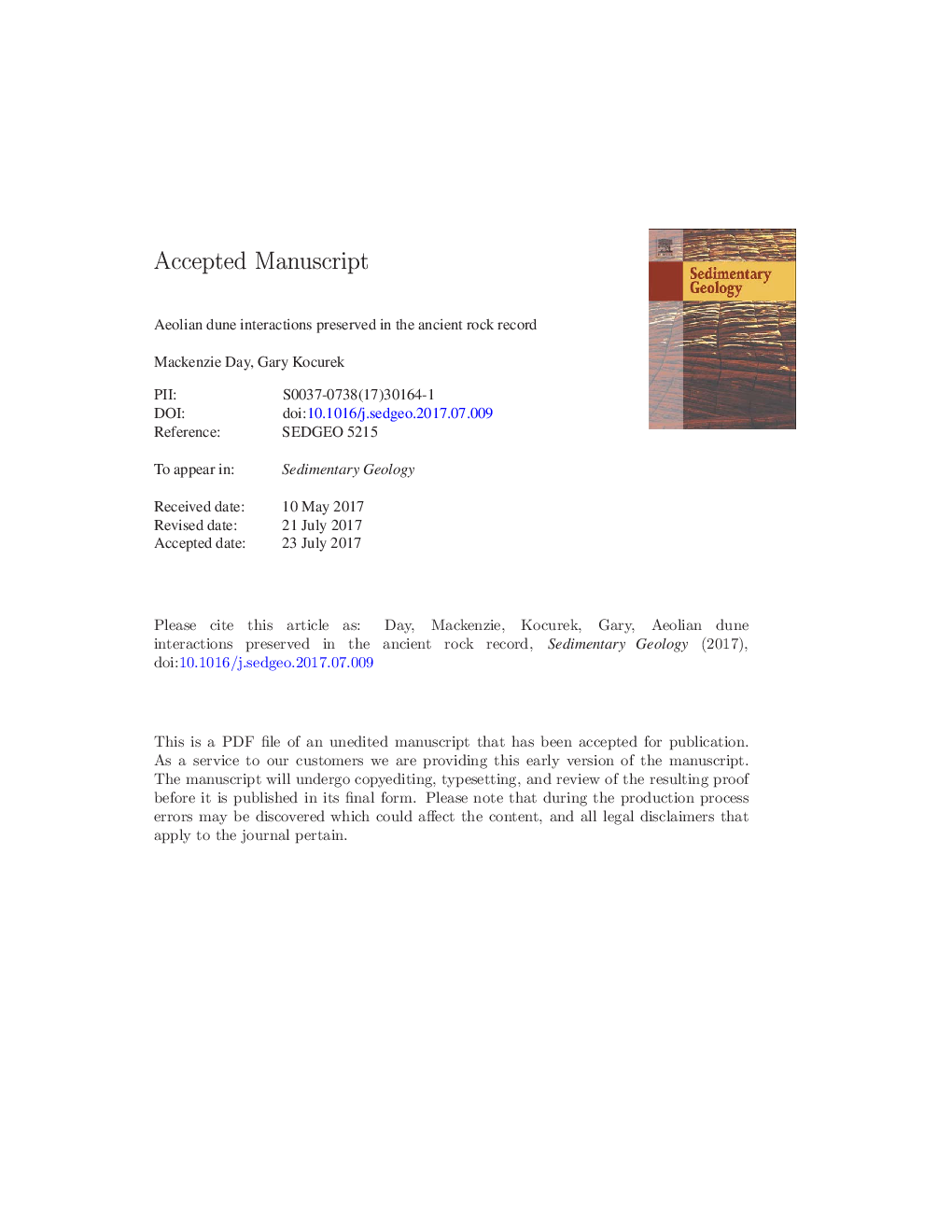| Article ID | Journal | Published Year | Pages | File Type |
|---|---|---|---|---|
| 5781350 | Sedimentary Geology | 2017 | 34 Pages |
Abstract
Interactions between individual dunes drive the evolution of a dune-field pattern. Ubiquitous in modern systems, dune interactions have increasingly been the focus in understanding dune-field dynamics through surface models and experiments. In contrast, how these dynamics are incorporated into the stratigraphic record has remained largely unaddressed. Current models for the interpretation of the architecture of sets of aeolian cross-strata and bounding surfaces do not explicitly incorporate dune interactions. Recent documentation of a common type of dune interaction and the resulting stratigraphic architecture at the White Sands Dune Field, New Mexico, has established a set of diagnostic criteria by which this architecture could be identified. In this study, five examples of interpreted interaction architecture were identified in well-known Jurassic aeolian units in the western United States. These results confirm the expected presence of dune-interaction architecture in the rock record, and highlight the need for a new generation of models that couple complex dune surface dynamics with their stratigraphic expression.
Keywords
Related Topics
Physical Sciences and Engineering
Earth and Planetary Sciences
Earth-Surface Processes
Authors
Mackenzie Day, Gary Kocurek,
